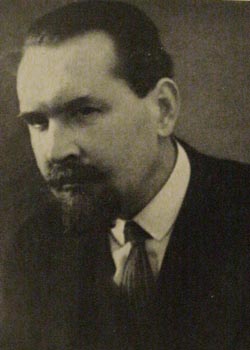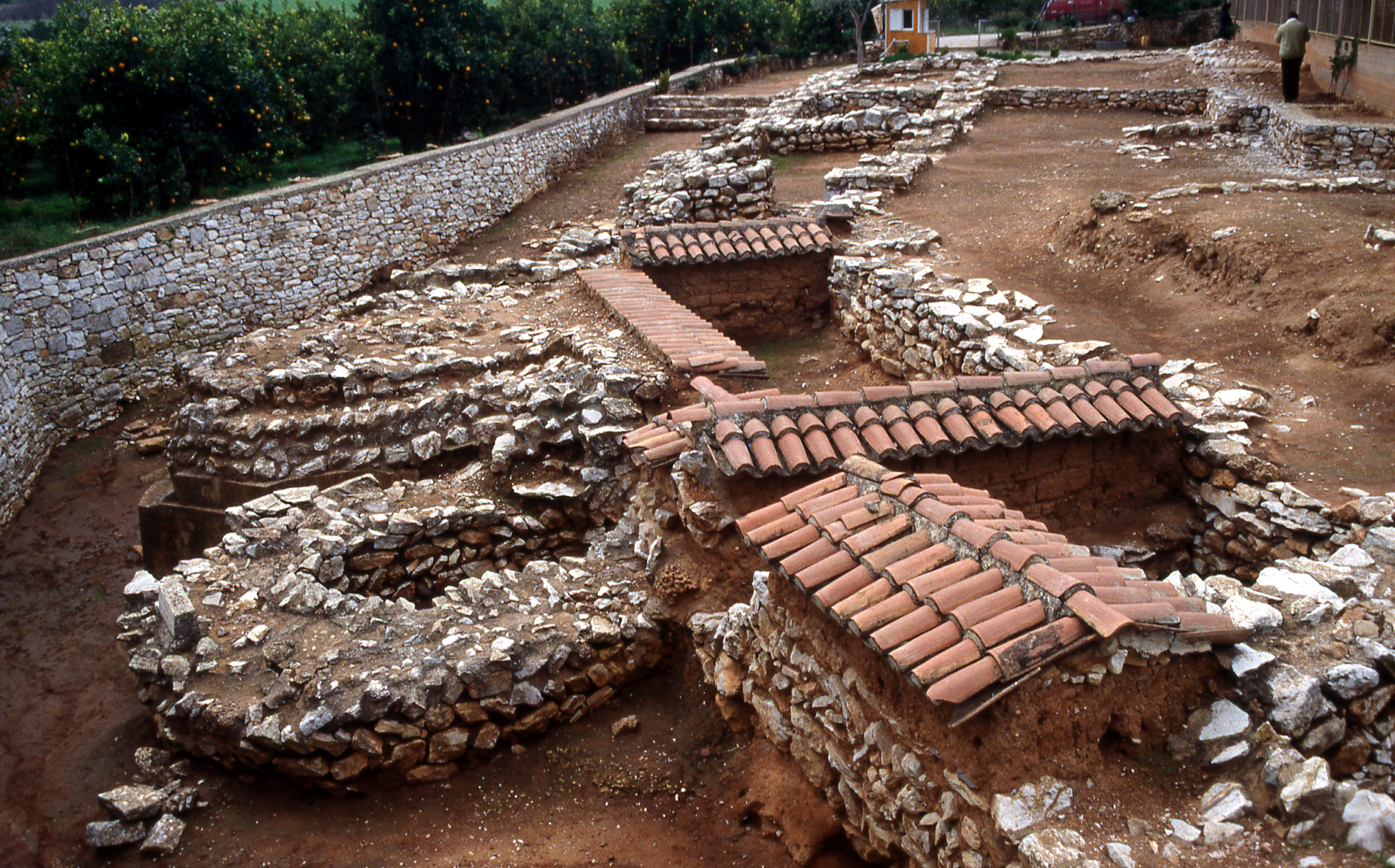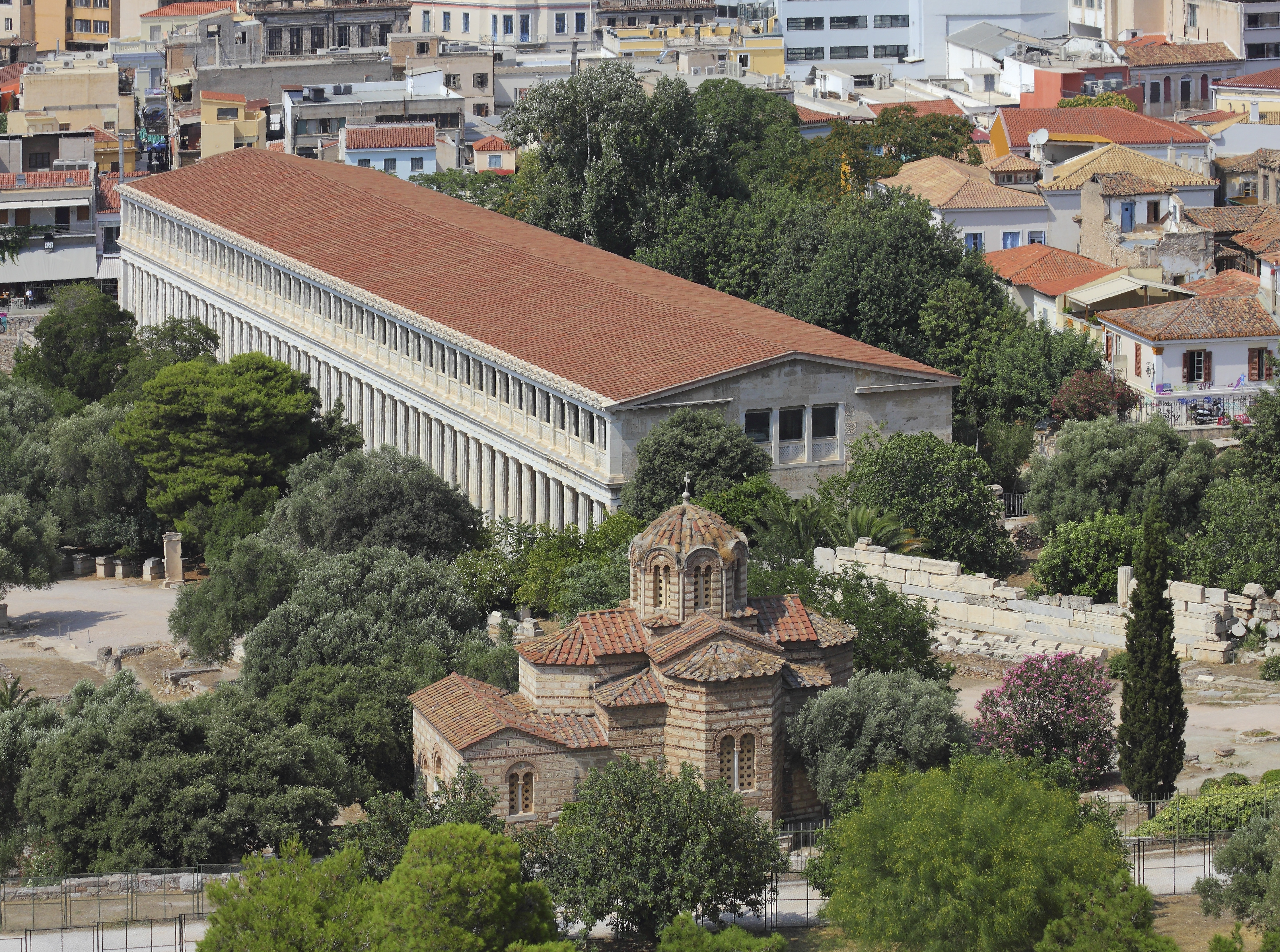|
Pre-Greek Substrate
The Pre-Greek substrate (or Pre-Greek substratum) consists of the unknown pre-Indo-European language(s) spoken in prehistoric Greece before the coming of the Proto-Greek language in the Greek peninsula during the Bronze Age. It is possible that Greek acquired approximately one thousand words and proper names from such a language or group of languages, because some of its vocabulary cannot be satisfactorily explained as deriving from Proto-Greek and a Proto-Indo-European reconstruction is almost certainly impossible for such terms. Introduction Linguistic situation Based upon toponymic and lexical evidence, it is generally assumed that one or several languages were once spoken in both the Greek peninsula and western Asia Minor before Mycenaean Greek and the attested Anatolian languages ( Hittite and Luwian) became predominant in the region. Various explanations for this phenomenon have been given by scholars. One substrate language, whose influence is observable on Ancie ... [...More Info...] [...Related Items...] OR: [Wikipedia] [Google] [Baidu] |
Pre-Indo-European Languages
The Pre-Indo-European languages are any of several ancient languages, not necessarily related to one another, that existed in Prehistoric Europe and Southern Asia before the arrival of speakers of Indo-European languages. The oldest Indo-European language texts date from the 19th century BC in Kültepe (modern Turkey), and while estimates vary widely, the spoken Indo-European languages are believed to have developed at the latest by the 3rd millennium BC (see Proto-Indo-European Urheimat hypotheses). Thus, the Pre-Indo-European languages must have developed earlier than or, in some cases, alongside the Indo-European languages that ultimately displaced them. A handful of the pre-Indo-European languages still survive; in Europe, Basque retains a localised strength, with fewer than a million native speakers, but the Dravidian languages remain very widespread in the Indian subcontinent, with over 200 million native speakers (the four major languages being Telugu, Tamil, Kannad ... [...More Info...] [...Related Items...] OR: [Wikipedia] [Google] [Baidu] |
Luwians
The Luwians were a group of Anatolian peoples who lived in central, western, and southern Anatolia, in present-day Turkey, during the Bronze Age and the Iron Age. They spoke the Luwian language, an Indo-European language of the Anatolian sub-family, which was written in cuneiform imported from Mesopotamia, and a unique native hieroglyphic script, which was sometimes used by the linguistically-related Hittites as well. Luwian was probably spoken over a larger geographic region than Hittite. History Origins There is no consensus on the origins of the Luwians. Armenia,Reich, David (2018), ''Who We Are and How We Got Here: Ancient DNA and the New Science of the Human Past'', Knopf Doubleday Publishing Group Iran, the Balkans, the Pontic–Caspian steppe and Central Asia have all been suggested. Their route into Anatolia is unknown. Linguist Craig Melchert suggested they were related to the Demirci Hüyük culture, implying entry into Anatolia from ancient Thrace circa ... [...More Info...] [...Related Items...] OR: [Wikipedia] [Google] [Baidu] |
Stop (consonant)
In phonetics, a plosive, also known as an occlusive or simply a stop, is a pulmonic consonant in which the vocal tract is blocked so that all airflow ceases. The occlusion may be made with the tongue tip or blade (, ), tongue body (, ), lips (, ), or glottis (). Plosives contrast with nasals, where the vocal tract is blocked but airflow continues through the nose, as in and , and with fricatives, where partial occlusion impedes but does not block airflow in the vocal tract. Terminology The terms ''stop, occlusive,'' and ''plosive'' are often used interchangeably. Linguists who distinguish them may not agree on the distinction being made. The terms refer to different features of the consonant. "Stop" refers to the airflow that is stopped. "Occlusive" refers to the articulation, which occludes (blocks) the vocal tract. "Plosive" refers to the release burst (plosion) of the consonant. Some object to the use of "plosive" for inaudibly released stops, which may then instead be ... [...More Info...] [...Related Items...] OR: [Wikipedia] [Google] [Baidu] |
Mycenaean Greece
Mycenaean Greece (or the Mycenaean civilization) was the last phase of the Bronze Age in Ancient Greece, spanning the period from approximately 1750 to 1050 BC.. It represents the first advanced and distinctively Greek civilization in mainland Greece with its palatial states, urban organization, works of art, and writing system.Lazaridis, Iosif et al.Genetic origins of the Minoans and Mycenaeans. ''Nature'', 2017Supplementary Information "The Mycenaeans", pp. 2–3).. The Mycenaeans were mainland Greeks, Greek peoples who were likely stimulated by their contact with insular Minoan civilization, Minoan Crete and other Mediterranean Sea, Mediterranean cultures to develop a more sophisticated sociopolitical culture of their own. The most prominent site was Mycenae, after which the culture of this era is named. Other centers of power that emerged included Pylos, Tiryns, Midea (Argolid), Midea in the Peloponnese, Orchomenus (Boeotia), Orchomenos, Thebes, Greece, Thebes, Athens in Cen ... [...More Info...] [...Related Items...] OR: [Wikipedia] [Google] [Baidu] |
Palatalization (phonetics)
In phonetics, palatalization (, also ) or palatization is a way of pronouncing a consonant in which part of the tongue is moved close to the hard palate. Consonants pronounced this way are said to be palatalized and are transcribed in the International Phonetic Alphabet by affixing the letter ⟨ʲ⟩ to the base consonant. Palatalization cannot minimally distinguish words in most dialects of English, but it may do so in languages such as Russian, Mandarin, and Irish. Types In technical terms, palatalization refers to the secondary articulation of consonants by which the body of the tongue is raised toward the hard palate and the alveolar ridge during the articulation of the consonant. Such consonants are phonetically palatalized. "Pure" palatalization is a modification to the articulation of a consonant, where the middle of the tongue is raised, and nothing else. It may produce a laminal articulation of otherwise apical consonants such as and . Phonetically palatalized c ... [...More Info...] [...Related Items...] OR: [Wikipedia] [Google] [Baidu] |
Labialization
Labialization is a secondary articulatory feature of sounds in some languages. Labialized sounds involve the lips while the remainder of the oral cavity produces another sound. The term is normally restricted to consonants. When vowels involve the lips, they are called rounded. The most common labialized consonants are labialized velars. Most other labialized sounds also have simultaneous velarization, and the process may then be more precisely called labio-velarization. In phonology, labialization may also refer to a type of assimilation process. Occurrence Labialization is the most widespread secondary articulation in the world's languages. It is phonemically contrastive in Northwest Caucasian (e.g. Adyghe), Athabaskan, and Salishan language families, among others. This contrast is reconstructed also for Proto-Indo-European, the common ancestor of the Indo-European languages; and it survives in Latin and some Romance languages. It is also found in the Cushitic an ... [...More Info...] [...Related Items...] OR: [Wikipedia] [Google] [Baidu] |
Vowel System
A vowel is a syllabic speech sound pronounced without any stricture in the vocal tract. Vowels are one of the two principal classes of speech sounds, the other being the consonant. Vowels vary in quality, in loudness and also in quantity (length). They are usually voiced and are closely involved in prosodic variation such as tone, intonation and stress. The word ''vowel'' comes from the Latin word , meaning "vocal" (i.e. relating to the voice). In English, the word ''vowel'' is commonly used to refer both to vowel sounds and to the written symbols that represent them (a, e, i, o, u, and sometimes y). Definition There are two complementary definitions of vowel, one phonetic and the other phonological. *In the phonetic definition, a vowel is a sound, such as the English "ah" or "oh" , produced with an open vocal tract; it is median (the air escapes along the middle of the tongue), oral (at least some of the airflow must escape through the mouth), frictionless and continua ... [...More Info...] [...Related Items...] OR: [Wikipedia] [Google] [Baidu] |
Lexicon
A lexicon is the vocabulary of a language or branch of knowledge (such as nautical or medical). In linguistics, a lexicon is a language's inventory of lexemes. The word ''lexicon'' derives from Greek word (), neuter of () meaning 'of or for words'. Linguistic theories generally regard human languages as consisting of two parts: a lexicon, essentially a catalogue of a language's words (its wordstock); and a grammar, a system of rules which allow for the combination of those words into meaningful sentences. The lexicon is also thought to include bound morphemes, which cannot stand alone as words (such as most affixes). In some analyses, compound words and certain classes of idiomatic expressions, collocations and other phrases are also considered to be part of the lexicon. Dictionaries are lists of the lexicon, in alphabetical order, of a given language; usually, however, bound morphemes are not included. Size and organization Items in the lexicon are called lexemes, ... [...More Info...] [...Related Items...] OR: [Wikipedia] [Google] [Baidu] |
Phonology
Phonology is the branch of linguistics that studies how languages or dialects systematically organize their sounds or, for sign languages, their constituent parts of signs. The term can also refer specifically to the sound or sign system of a particular language variety. At one time, the study of phonology related only to the study of the systems of phonemes in spoken languages, but may now relate to any linguistic analysis either: Sign languages have a phonological system equivalent to the system of sounds in spoken languages. The building blocks of signs are specifications for movement, location, and handshape. At first, a separate terminology was used for the study of sign phonology ('chereme' instead of 'phoneme', etc.), but the concepts are now considered to apply universally to all human languages. Terminology The word 'phonology' (as in 'phonology of English') can refer either to the field of study or to the phonological system of a given language. This is one ... [...More Info...] [...Related Items...] OR: [Wikipedia] [Google] [Baidu] |
Lerna
In classical Greece, Lerna ( el, Λέρνη) was a region of springs and a former lake near the east coast of the Peloponnesus, south of Argos. Even though much of the area is marshy, Lerna is located on a geographically narrow point between mountains and the sea, along an ancient route from the Argolid to the southern Peloponnese; this location may have resulted in the importance of the settlement. Its site near the village Mili at the Argolic Gulf is most famous as the lair of the Lernaean Hydra, the chthonic many-headed water snake, a creature of great antiquity when Heracles killed it, as the second of his labors. The strong Karstic springs remained; the lake, diminished to a silt lagoon by the 19th century, has vanished. Lerna is notable for several archaeological sites, including an Early Bronze Age structure known as House of the Tiles, dating to the Early Helladic period II (2500–2300 BC). Myths The secret of the Lernaean spring was the gift of Poseidon whe ... [...More Info...] [...Related Items...] OR: [Wikipedia] [Google] [Baidu] |
American School Of Classical Studies At Athens
, native_name_lang = Greek , image = American School of Classical Studies at Athens.jpg , image_size = , image_alt = , caption = The ASCSA main building as seen from Mount Lykavittos , latin_name = , other_name = , former_name = , motto = , motto_lang = , mottoeng = , established = 1881 , closed = , type = Overseas Research Center / Higher Education , parent = , affiliation = , religious_affiliation = , academic_affiliation = , endowment = , budget = , officer_in_charge = , chairman = , chairperson = , chancellor = , president = , vice-president = , superintendent = , provost = , vice_chancellor = , rector = , principal = , dean = , director = , head_label = , head = , academic_staff = , administrative_staff = , students = , undergrad = , postgrad = , doctoral = , other = , city = Athens , state = , province = , country = Greece , coor = , campus = urban , language = , free_label = , ... [...More Info...] [...Related Items...] OR: [Wikipedia] [Google] [Baidu] |
Linear B
Linear B was a syllabic script used for writing in Mycenaean Greek, the earliest attested form of Greek. The script predates the Greek alphabet by several centuries. The oldest Mycenaean writing dates to about 1400 BC. It is descended from the older Linear A, an undeciphered earlier script used for writing the Minoan language, as is the later Cypriot syllabary, which also recorded Greek. Linear B, found mainly in the palace archives at Knossos, Kydonia, Pylos, Thebes and Mycenae, disappeared with the fall of Mycenaean civilization during the Late Bronze Age collapse. The succeeding period, known as the Greek Dark Ages, provides no evidence of the use of writing. Linear B, deciphered by English architect and self-taught linguist Michael Ventris—based on the research of American classicist Alice Kober—is the only Bronze Age Aegean script to have been deciphered. Linear B consists of around 87 syllabic signs and over 100 ideographic signs. These ideograms or "signifying" ... [...More Info...] [...Related Items...] OR: [Wikipedia] [Google] [Baidu] |

.jpg)



